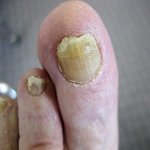Foot conditions and treatments

Corns, calluses, hard skin
Corns are dense local areas of hard skin which are caused by recurrent pressure on the same area of skin. This is often due to abnormal biomechanics, foot deformities (such as hammer toes or bunions) or ill-fitting footwear. Corns have a central core called a nucleus which is often very painful and requires treatment by a podiatrist. Treatment will include the removal of the corn and help to address the abnormal pressure that is causing the corn to develop. Hard skin, or callus, is caused by frictional forces or a more diffuse pressure area. Hard skin can be managed through filing or using a pumice stone and by using a foot moisturiser daily. However callus often requires painless removal.

Verrucae
This is a skin infection caused by the human papilloma virus which invades the outermost layer of the skin and causes visible lesions to appear. In most cases, these are not painful and resolve without the need for treatment. However, in some cases verrucae can cause pain and continue to grow or spread, therefore treatment is often sought. We offer a range of verrucae treatments including homeopathic, caustic agents, liquid nitrogen freezing, low level laser and electro-surgery.

Heel pain (plantar fasciitis)
The plantar fascia is a fibrous band of tissue stretching from the heel up along the arch to the toe joints. This commonly becomes inflamed – plantar fasciitis. Often this is caused by repetitive strain through the tissue over a period of time This can cause long term damage and inflammation. This condition can be treated by improving the biomechanics of the way you walk or run: thereby improving the way in which the foot, and this tissue, bear the stresses put upon it. Foot orthoses are specialised insoles that podiatrists often use in the treatment of this condition, as well as addressing any muscle imbalances contributing to it.

Fungal toenails
Toenails that have fungal infections can be identified by white spots on the surface of the nail, yellow or brown tracks at the end of the nail with similar tracks extending up from the cuticle or crumbling at the nail edges. At their worst, they may cause total destruction or deformity of the nail, can spread to other toenails and may lead to athlete's foot on the skin. Many people find fungal infections very slow to spread and are completely painless. They are very common in active adults and older persons.
Don't put up with your foot complaint a moment longer. Call Tristan White Podiatry and Chiropody today on 07518 284 033
